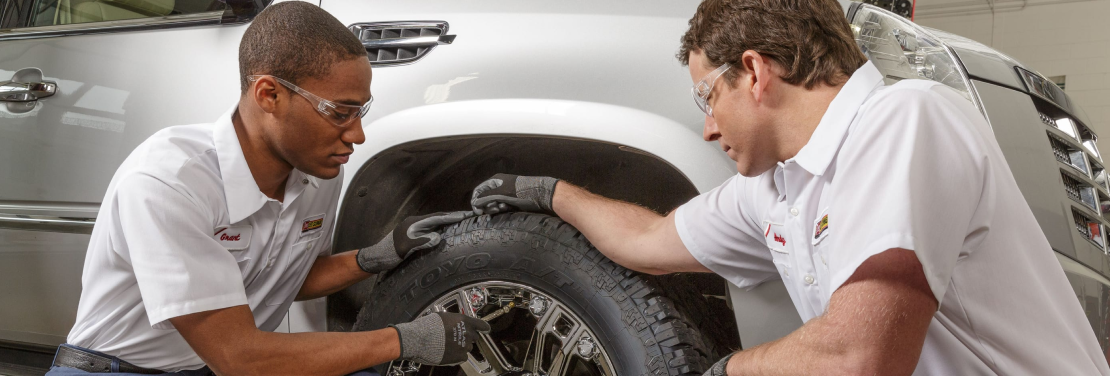Quality Tire Shop Morris: Your Best Location for Tire Demands
Quality Tire Shop Morris: Your Best Location for Tire Demands
Blog Article
Tire Solution: Comprehending Tire Stress Monitoring Systems
Recognizing Tire Pressure Tracking Solutions (TPMS) is a crucial aspect of maintaining ideal lorry performance and safety and security when driving. With innovations in auto innovation, TPMS has actually become a basic attribute in modern cars, offering real-time information on tire pressure levels. Delving deeper right into the details of TPMS, one can uncover the various components that make up this system and the significance of each in guaranteeing accurate monitoring. From direct to indirect TPMS systems, the landscape of tire stress surveillance varies, each with its unique set of factors to consider and benefits. Remain tuned to unwind the complexities of TPMS, from maintenance tips to the undeniable benefits of maintaining your tires effectively inflated. mopar tire service specials.

Relevance of TPMS
The relevance of Tire Stress Tracking Solutions (TPMS) depends on their capacity to improve automobile security and efficiency via real-time monitoring of tire pressure degrees. Preserving the appropriate tire stress is vital for making sure optimum handling, braking, and overall security of a vehicle. TPMS supplies motorists with prompt comments on any underinflated or overinflated tires, allowing for timely adjustments to be made.
Parts of TPMS
Consisting of numerous vital elements, a Tire Stress Tracking System (TPMS) operates as a sophisticated security feature in contemporary cars. The main parts of a TPMS include sensors, a control component, and a caution sign. Sensors are typically located in the tire valve stem or affixed to the wheel assembly, where they measure tire pressure and send data to the control module. The control component processes this info and causes a warning if it identifies dramatically low pressure in any one of the tires. The warning indication, commonly a symbol on the dashboard, alerts the motorist to inspect the affected tire or tires. Some progressed TPMS versions additionally show the real tire stress analyses for each tire, supplying motorists with real-time information to make sure ideal tire performance and security. By keeping an eye on tire stress constantly, TPMS assists prevent mishaps, decreases tire wear, and enhances gas effectiveness, making it a critical element for automobile safety and security and efficiency.
Kinds Of TPMS

On the various other hand, indirect TPMS counts on the vehicle's wheel rate sensors to keep track of tire stress. This system finds underinflation by contrasting the rotational speeds of the wheels. Indirect TPMS is less pricey than direct TPMS, as it uses existing sensors within the lorry.
While direct TPMS offers a lot more exact analyses, indirect TPMS is less complex in design and usually calls for much less upkeep. Both systems have their limitations and benefits, and the selection in between them frequently relies on variables such as cost, vehicle make, and individual choice. Recognizing the differences in between these two sorts of TPMS can aid automobile owners make notified choices relating to tire upkeep and safety and security.
TPMS Upkeep Tips
Efficient upkeep of TPMS is necessary for ensuring ideal performance and safety of your automobile. On a regular basis inspecting the TPMS sensors for any damage or deterioration is critical. Make certain that the sensors are clean and free from debris that could interfere with their performance. Furthermore, it is recommended to check the sensor batteries periodically and replace them as needed to ensure exact analyses. Conduct regular checks on the tire pressure degrees and contrast them with the TPMS analyses to guarantee they correspond. Alter the system following the supplier's guidelines if there are any kind of disparities. Additionally, throughout tire turning or substitute, make certain that the TPMS a knockout post components are dealt with thoroughly click for more to stop any type of prospective damages. Lastly, if the TPMS advising light illuminates on the dashboard, attend to the issue immediately by inspecting the tire stress and the overall system for any mistakes. By adhering to these maintenance pointers, you can lengthen the life-span of your TPMS and improve the safety and security of your driving experience.
Benefits of Appropriate Tire Pressure
Keeping appropriate tire pressure, as stressed in TPMS Maintenance Tips, is critical for gaining the numerous advantages related to optimal tire pressure levels. One of the main benefits of preserving the appropriate tire pressure is improved gas efficiency. When tires are appropriately pumped up, there is less rolling resistance, leading to far better gas economy. Additionally, correct tire pressure makes certain even tire wear, expanding the life-span of the tires and advertising more secure driving conditions. With the ideal tire pressure, automobiles also have much better handling and traction, specifically in adverse weather. This can boost total driving efficiency and safety for the chauffeur and travelers. Preserving optimum tire stress can add to a smoother and extra comfortable ride by reducing resonances and noise created by underinflated tires. To conclude, the benefits of appropriate tire stress go past just tire durability; they incorporate enhanced gas effectiveness, boosted security, better automobile efficiency, and total driving comfort.
Conclusion
To conclude, recognizing tire pressure tracking systems (TPMS) is crucial for keeping optimum tire pressure and making sure car safety and security. By identifying the importance of TPMS, recognizing with its parts, understanding the various kinds available, adhering to correct maintenance tips, and realizing the advantages of maintaining appropriate tire stress, drivers can enhance their driving experience and prolong the life expectancy of their look what i found tires. Proper tire stress is essential to risk-free and reliable vehicle operation.

Report this page